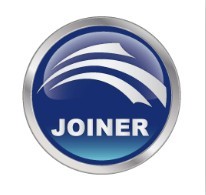Product (9)
- Twin Screw Extruder (1)
- Rubber Roller (1)
- Knife (2)
- Side Feeder (1)
- Pelletizer (1)
- Barrels (1)
- Shafts (1)
- Screw segments (1)
News (8)
Credit Report
Products Index
Company Info
Joiner Machinery Co.,ltd [China (Mainland)]
Business Type:Manufacturer, Trading Company
City: Chengdu
Province/State: Sichuan
Country/Region: China (Mainland)
News
Cone type twin screw extruder having gear reductio
| Source: | Click rate: | Date:2011-08-01 |
Twin screw extruder with power branching gearing Each screw shaft of a twin screw extruder with power branching gearing is driven by a gear train comprising a driven pinion, a first pair of intermediate gears meshing with the driven pinion from opposite sides, a second pair of intermediate gears each meshed with a respective one of the first pair of intermediate gears and a drive pinion meshed on its opposite sides with the second pair of intermediate gears and coupled to a power shaft. The first and second pairs of intermediate gears are capable only of rotation in a gear casing in which they are mounted but the drive pinion and the driven pinion are capable of radial movement in the casing. The distance between the axes of the twin screw extruder for compound modification shafts of a twin screw extruder limits the diameters of driven pinions on the shafts and forming part of gearing for driving the screws. These driven pinions cannot be just any amount larger than the screw shafts themselves. Even if the driven pinions of the two drive shafts for the two-stage compounding line are staggered axially with respect to one another, with the high torques required nowadays it is no simple matter to obtain a long enough life for the gearing and small loads on radial bearings of the drive shafts for the screws. Preferably the drive pinion has a coaxial twin screw extruder for filling process with curved teeth, engaged in a coupling sleeve with internal teeth, the other end of the coupling sleeve engages over an end of a shaft with curved teeth, and the driven pinion similarly has a coaxial extension with curved teeth, engaged in a further coupling sleeve with internal teeth, the other end of the further coupling sleeve engaging over and meshing with a portion of the screw drive shaft provided with curved teeth. Such a power branching gearing can enable the strong drive forces which are now required in twin screw extruder to be transmitted without any appreciable bending of the screw drive shaft and consequent premature damage to the radial bearings. In every loaded condition of the screw shaft the strong torque to be transmitted is divided into two equal components and transmitted by uniform power branching. The cost of bearings for the screw drive shaft can be minimised, since the shaft can nolonger be bent by unilateral application of force. twin screw extruder two-stage compounding line twin screw extruder for filling process | ||
Pre Page:
Welcome to visit our booth at W3K21...
Next Page:
Twin screw extruder for plastic...
.gif)


